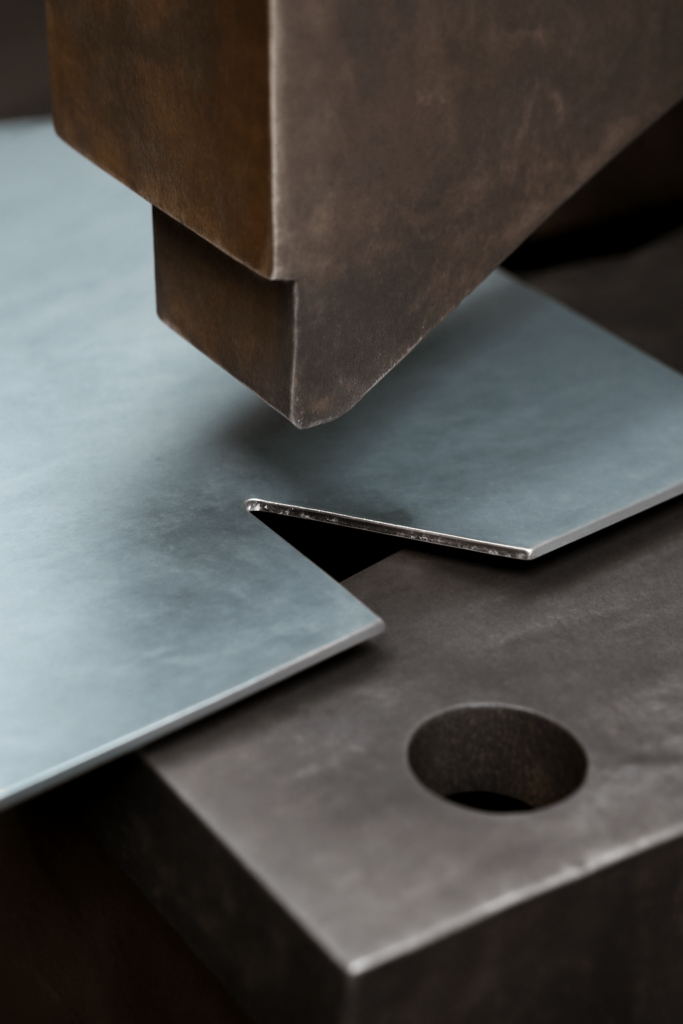Why Sheet Metal Notching Matters to Procurement
Sheet metal notching plays a key role in fabrication, impacting part fit, assembly efficiency, and production costs. For procurement teams, ensuring precise notching throughout the production process translates into fewer reworks, faster lead times, and consistent quality.
Inaccurate or inconsistent notching can lead to misalignment, poor fitment, and increased assembly time—leading to delays and higher costs. By ensuring precise notching from the start, these risks are minimized, providing both cost savings and production reliability.
Integrating notching precision throughout the production cycle—from prototype to full-scale production—optimizes dimensional integrity, reduces scrap, and supports both low MOQ orders and high-volume batch runs. Consistent accuracy in notching is essential for streamlining production schedules and improving overall procurement efficiency.
What Is Sheet Metal Notching—and Why It’s Essential
Sheet metal notching is the process of cutting material from the edges or corners of a sheet to allow for clean bending, fitting, or access for downstream processes. Unlike hole punching, which creates holes, notching focuses on cutting along the perimeter of the part.
This process is especially important in precision sheet metal fabrication because it helps prevent corner distortion and allows for tighter bends, ensuring that parts can fit together correctly without issues during assembly. For procurement teams sourcing high-quality precision sheet metal components, accurate notching ensures better part compatibility, reduces scrap, and improves assembly efficiency.
Key Procurement Considerations:
- Impact on Bending Tolerances: How will the notch affect material during bending?
Design Alignment: Are the notches aligned with CAM toolpaths for precise execution?
Post-Processing Requirements: Does the design specify whether burrs or finishing processes are required?
Addressing these questions early on with your supplier helps avoid costly delays and production issues.
Why Notching Impacts Production Efficiency
Precise notching reduces the need for secondary operations such as grinding, deburring, or trimming after parts have been bent. This directly impacts production timelines and procurement costs, which is vital for procurement professionals.
Reduces Secondary Work: Accurate notching minimizes the need for additional grinding, deburring, or trimming after bending.
Improves Assembly Fit: Consistent notching ensures that parts fit together without interference, reducing errors and assembly time.
Enhances Part Appearance: Clean, precise notches are crucial for applications where appearance matters, such as in visible or branded components.
For example, in precision sheet metal fabrication for automotive components or custom sheet metal fabrication for industrial enclosures, inconsistent notching can compromise the part’s functionality or appearance, leading to costly rework.
Notching Types and Their Procurement Relevance
The type of notch used depends on material, design, and the production method employed. Here are the most common types of notches:
V-Notch: Perfect for tight corners and box folds in compact assemblies.
U-Notch: Best for thicker gauge parts such as structural brackets.
Rectangular Notch: A versatile notch that is used in a wide range of standard applications.
Pattern-Based Notch: Requires careful alignment with other cutouts or design features, crucial for complex assemblies.
Selecting the right type of notch from the beginning minimizes tooling changes and prevents production risks. Our team works with engineers to verify notch specifications against application requirements, ensuring the optimal type is used every time.
Factors That Influence Notching Precision
Achieving precise notching depends on several factors, including material behavior, tooling, and machine programming. Procurement teams should consider these aspects when evaluating suppliers:
Material Thickness & Composition: Thin gauges of aluminum deform more easily, while steel and thicker materials require higher shear forces. For mixed-material or low-volume orders, dies may need recalibration.
Cutting Technology: Laser cutting provides cleaner edges with less deformation, while punch presses are more efficient for batch processing but require well-matched tooling.
Toolpath & Sequence: Advanced CAM programming ensures that springback and material behavior are accounted for, especially when notches are adjacent to bends. Design for Manufacturability (DFM) principles help avoid difficult geometries that can lead to defects.
When selecting suppliers, choose those with robust quality control systems to ensure consistent results across production runs, backed by process data and traceability.
How Notching Fits the Manufacturing Workflow
Notching is a key step in the overall sheet metal fabrication process. Here’s how it fits into the production workflow:
Drawing Review: In the DFM phase, CAD files are reviewed to ensure that notches are properly defined and tolerances are set.
CAM Programming: The cutting sequence is optimized to avoid material deformation.
Execution: Depending on the part’s complexity, methods like punch, shear, or laser cutting are used.
Finishing: After notching, additional processes like deburring or passivation may be required for safety or cosmetic purposes.
Inspection: Post-production inspections ensure that parts meet dimensional specifications.
This ensures that notching is integrated smoothly into the workflow, minimizing delays and enhancing overall production consistency.
Where Notching Is Mission-Critical
Automotive Components
In the automotive industry, notching is critical for parts like crash zones, brackets, and cabin frames. These components must meet precise tolerances for proper fit and structural integrity.
Custom Sheet Metal Fabrication for Energy Enclosures and Telecom
Notching is vital for modular racks and enclosures, where it facilitates cable routing, ventilation, and lock mechanisms. Accurate notching ensures that parts fit together correctly, reducing manual adjustments and assembly time.
Retail Displays & Vending Machines
Parts for retail displays and vending machines require high precision, especially when these parts are visible or customer-facing. Inconsistent notching can affect the appearance and functionality, making it essential to select a supplier that prioritizes precise manufacturing.
Scaling Considerations for Buyers
As you scale from prototypes to full production runs, it’s essential to consider the following:
Will notch precision remain consistent as batch size increases?
How flexible is the tooling for adjusting to new part designs?
Does the supplier offer transparent pricing and clear quality metrics?
Working with a supplier that offers modular tooling and integrated quality control systems ensures consistent production quality, whether you’re scaling up or handling small, high-mix orders.
Common Notching Mistakes in RFQs
To avoid procurement risks, ensure that RFQs include the following details:
Clear indication of corner reliefs and notch locations.
Both flat and formed views of CAD files.
Precise tolerance ranges for every edge, not just the critical ones.
Without these details, misinterpretations can lead to production delays, redesign costs, and higher scrap rates.
What to Check in Supplier Notching Capabilities
When evaluating potential suppliers, ask the following:
What is their minimum notch radius capability?
Do they support pattern-matching across batches?
Are they equipped to maintain notch alignment during bending?
Can they provide export-ready documentation and meet compliance standards?
Transparency in these capabilities reduces procurement risks and helps ensure smoother, more predictable manufacturing.
What’s Next for Sheet Metal Notching?
Technological advancements are shaping the future of sheet metal notching:
Laser QC Systems: Real-time inline measurement ensures consistency in cut quality.
AI-Optimized Toolpaths: Software that adapts to material behavior, improving cutting precision.
Sustainable Practices: Reducing material waste and adopting eco-friendly manufacturing techniques.
By staying ahead of these advancements, procurement teams can reduce costs, improve quality, and meet sustainability goals.
Final Thoughts: Focus on Value, Not Hype
Effective sheet metal notching is a critical component in controlling costs, improving product quality, and ensuring manufacturing efficiency. For procurement teams, understanding the importance of precise notching and selecting the right supplier can significantly impact long-term project success.
If you’re ready to optimize your notching strategy, it’s time to collaborate with a supplier who understands the technical and business needs that impact your bottom line.
📩 Contact us today to learn how precision notching can enhance your production efficiency and product quality.


